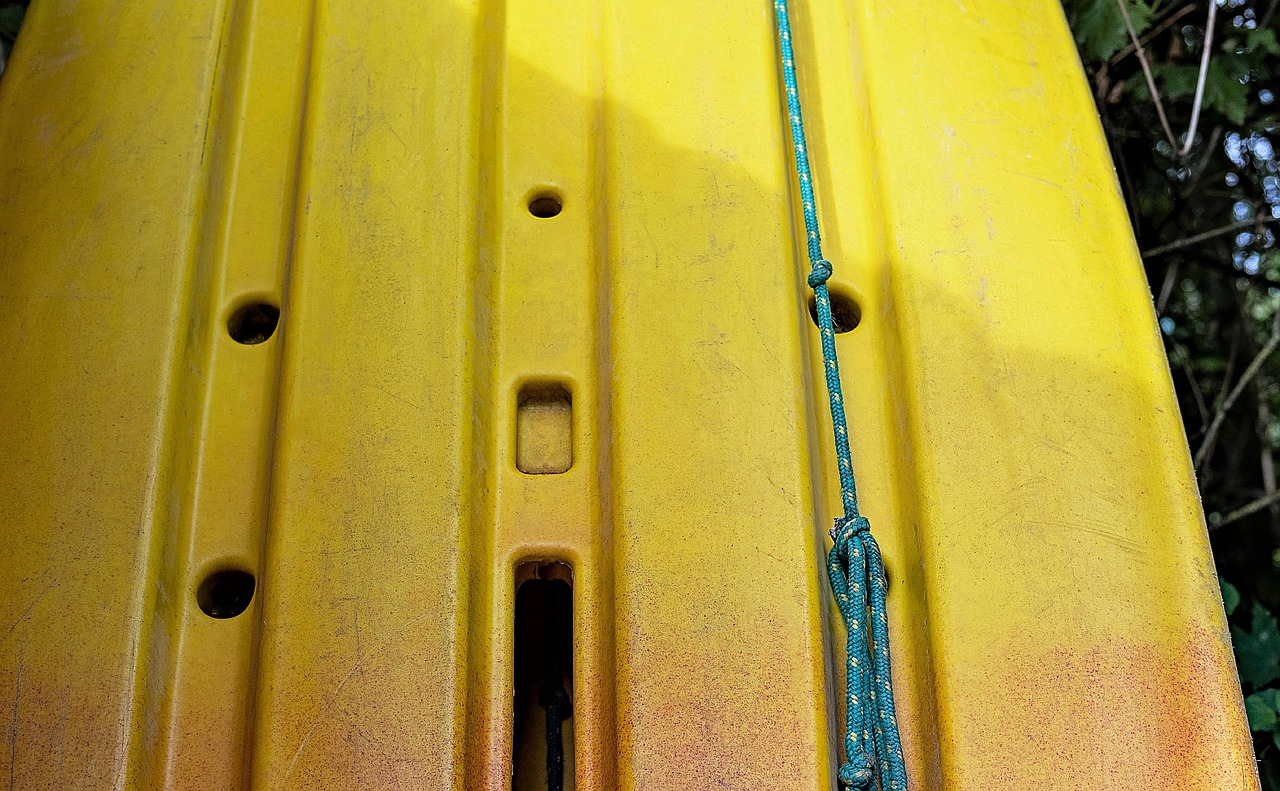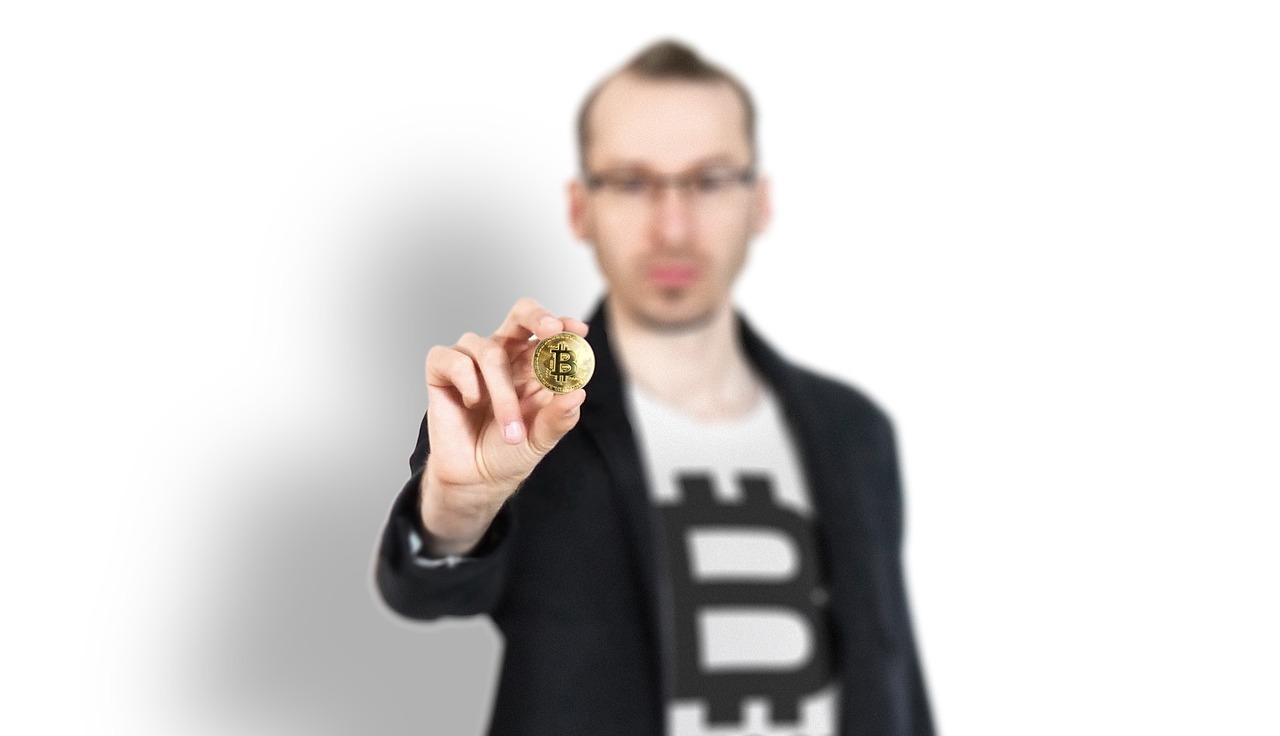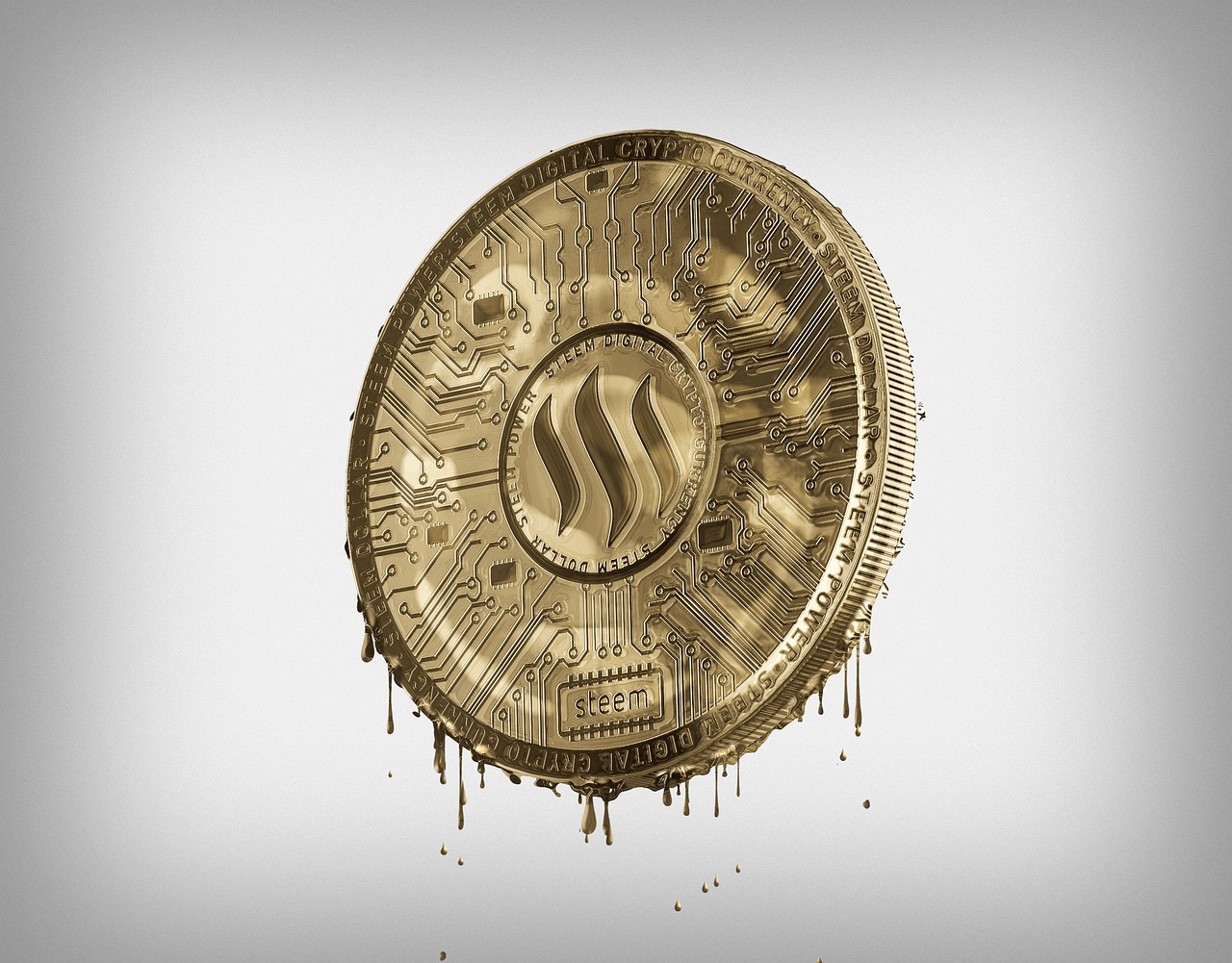Tether (USDT) - The Most Popular Stablecoin Reviewed
Tether (USDT) has emerged as a cornerstone of the cryptocurrency market, often regarded as the most widely used stablecoin. But what exactly does that mean? In a world where cryptocurrencies can experience wild price swings, Tether offers a semblance of stability by maintaining a 1:1 peg with the US dollar. Imagine holding a digital dollar that you can send, receive, or trade without the fear of losing value overnight. This unique feature makes Tether an attractive option for traders and investors looking to navigate the often-turbulent waters of the crypto landscape.
The significance of Tether goes beyond just its stability. It serves as a bridge between traditional finance and the world of cryptocurrencies, allowing users to easily convert their volatile assets into a stable digital currency. This functionality is crucial for those who want to take advantage of market opportunities without completely exiting the crypto ecosystem. It's like having a safety net that can catch you when the market takes a nosedive.
Moreover, Tether's popularity can be attributed to its widespread acceptance across various cryptocurrency exchanges. This means that you can easily trade USDT for other cryptocurrencies or fiat currencies, enhancing liquidity and accessibility. In a market where timing is everything, having a stablecoin like Tether at your disposal can be a game changer.
However, it's essential to acknowledge that Tether is not without its controversies. Questions surrounding its transparency and regulatory compliance have sparked debates among investors and market participants. Despite these challenges, Tether continues to thrive, adapting to the evolving landscape of cryptocurrencies.
As we delve deeper into the mechanics of Tether, its benefits, controversies, and future prospects, it's crucial to understand why this stablecoin has captured the attention of so many within the crypto community. So, buckle up as we explore the multifaceted world of Tether and uncover what makes it tick!
- What is Tether (USDT)? Tether is a stablecoin designed to maintain a 1:1 value with the US dollar, providing stability in the volatile cryptocurrency market.
- How does Tether maintain its value? Tether is backed by reserves that are meant to equal the amount of USDT in circulation, ensuring that each token can be redeemed for a US dollar.
- Is Tether safe to use? While Tether offers stability and liquidity, concerns about transparency and regulatory compliance should be considered before using it.
- What are the benefits of using Tether? Tether provides price stability, enhanced liquidity, and ease of use, making it an attractive option for traders and investors.

What is Tether (USDT)?
Tether (USDT) is a stablecoin designed to maintain a 1:1 value with the US dollar, providing a stable digital currency option for cryptocurrency traders and investors. In a world where cryptocurrencies can fluctuate wildly in value, Tether serves as a safe harbor, allowing users to park their assets without the fear of losing significant value overnight. Imagine being on a rollercoaster, where the highs can be exhilarating but the lows can be terrifying; Tether is like the safety bar that keeps you securely in place.
Launched in 2014, Tether has quickly become one of the most widely used digital currencies, with billions of dollars in daily trading volume. This popularity stems from its ability to offer the benefits of cryptocurrency—such as fast transactions and low fees—while mitigating the risks associated with price volatility. Tether is often used as a trading pair on exchanges, enabling users to easily transition between more volatile cryptocurrencies and a stable asset.
To understand Tether better, it's essential to grasp its core features:
- Price Stability: Tether aims to keep its value pegged to the US dollar, which means that 1 USDT is intended to equal 1 USD. This stability is particularly appealing during times of market uncertainty.
- Liquidity: With its extensive use across various exchanges, Tether provides high liquidity, allowing users to convert assets quickly without significant price slippage.
- Accessibility: Tether can be used on multiple platforms, making it a versatile option for traders and investors alike.
Despite its advantages, Tether is not without its challenges. Questions about its reserves and the transparency of its operations have led to scrutiny from both users and regulators. Nevertheless, its role as a stablecoin continues to be significant in the ever-evolving cryptocurrency landscape.

How Tether Works
Tether operates on a foundation of robust blockchain technology, which is crucial for its functionality as a stablecoin. At its core, Tether (USDT) is designed to maintain a 1:1 value with the US dollar, providing a reliable digital currency for traders and investors alike. But how does it achieve this stability? The answer lies in its unique issuance process and the mechanisms that keep it pegged to the dollar.
Tether is built on multiple blockchains, including Ethereum, Tron, and others, which allows for seamless transactions across various platforms. This multi-chain support not only enhances security and transparency but also ensures that users can access Tether on their preferred blockchain. When you think about it, it’s like having a universal remote control for different devices; Tether can be used in multiple environments without compromising on functionality.
The presence of Tether on various blockchains significantly boosts its accessibility and usability. This means that whether you’re trading on a decentralized exchange or using a centralized platform, you’ll likely find USDT available. This widespread acceptance makes it easier for users to transact without worrying about the underlying technology. In a world where speed and efficiency matter, Tether stands out as a go-to stablecoin.
Another fascinating aspect of Tether’s operation is its use of smart contracts. These self-executing contracts automatically facilitate, verify, or enforce the negotiation or performance of a contract. With Tether, smart contracts help ensure that transactions are executed securely and without the need for intermediaries. This reduces the risk of fraud and enhances trust among users. Imagine a vending machine: you put in your money, select your item, and the machine delivers it without any human intervention. That’s how Tether’s smart contracts work to streamline transactions.
One of the key features of Tether is its issuance and redemption process. Each USDT token is backed by an equivalent US dollar held in reserve, ensuring that users can redeem their tokens at any time for fiat currency. This backing provides a layer of reassurance for users, knowing that their digital assets are not just numbers on a screen but are tied to real-world value. It’s like having a safety net; you know you can always fall back on it if needed.
In summary, Tether’s operation is a complex interplay of blockchain technology, multi-chain support, smart contracts, and a transparent issuance process. Together, these elements create a stable and reliable digital currency that caters to the needs of traders and investors in an ever-evolving cryptocurrency landscape.
- What is Tether (USDT)? Tether is a stablecoin that aims to maintain a 1:1 value with the US dollar.
- How does Tether maintain its peg to the dollar? Tether is backed by reserves, ensuring that each USDT token can be redeemed for one US dollar.
- On which blockchains does Tether operate? Tether operates on several blockchains, including Ethereum and Tron, enhancing its accessibility.
- What are the benefits of using Tether? Tether offers price stability, enhanced liquidity, and ease of use, making it attractive for cryptocurrency traders.

Blockchain Technology
This article explores Tether, its significance in the cryptocurrency market, and various aspects such as its functionality, benefits, controversies, and future prospects.
Tether (USDT) is a stablecoin designed to maintain a 1:1 value with the US dollar, providing a stable digital currency option for cryptocurrency traders and investors.
Understanding the mechanics behind Tether involves exploring its blockchain technology, issuance process, and how it maintains its peg to the US dollar.
Tether operates on various blockchains, including Ethereum and Tron, which allows for seamless transactions across different platforms while ensuring security and transparency. The use of blockchain technology is pivotal to Tether's functionality, as it guarantees that every transaction is recorded in an immutable ledger, thus providing a high level of trust among users. This decentralized nature means that no single entity has control over the network, reducing the risk of fraud and manipulation.
Moreover, Tether's multi-chain support enhances its accessibility and usability, catering to a broader range of users and applications within the cryptocurrency ecosystem. Let’s break down some key aspects of Tether's blockchain technology:
- Multi-Chain Support: By operating on multiple blockchains, Tether ensures that users can transact with USDT across different platforms, enhancing its utility.
- Smart Contracts: Utilizing smart contracts, Tether ensures that transactions are executed automatically and securely, reducing the risk of fraud and enhancing trust among users.
- Security: The blockchain technology underpinning Tether provides a secure environment for transactions, which is crucial in the often volatile world of cryptocurrencies.
In addition to these features, Tether's reliance on blockchain technology allows it to leverage the benefits of decentralization. This means that users can transact without the need for intermediaries, making the process faster and often cheaper. The transparency provided by blockchain also allows users to verify transactions independently, thereby increasing confidence in the system.
Tether's issuance process involves backing each USDT token with a corresponding US dollar, ensuring that users can redeem their tokens at any time for fiat currency.
Tether offers several advantages, including price stability, enhanced liquidity, and ease of use, making it an attractive option for traders and investors in the volatile crypto market.
With its pegged value, Tether minimizes the risks associated with price fluctuations, allowing users to hold a stable asset during market volatility.
Tether's widespread acceptance across exchanges enhances liquidity, enabling users to quickly convert their assets into USDT without significant price impact.
Despite its popularity, Tether has faced scrutiny regarding its transparency, reserves, and regulatory compliance, raising concerns among investors and market participants.
Critics argue that Tether has not consistently provided sufficient evidence of its reserves, leading to questions about whether each USDT is fully backed by US dollars.
As regulatory frameworks around cryptocurrencies evolve, Tether's compliance with laws and regulations remains a topic of concern for both users and authorities.
As the cryptocurrency landscape continues to evolve, Tether's role as a stablecoin will be influenced by market trends, regulatory developments, and competition from other stablecoins.
Emerging trends in the cryptocurrency market, such as decentralized finance (DeFi) and non-fungible tokens (NFTs), will shape the demand and utility of Tether in the future.
Tether faces increasing competition from other stablecoins like USDC and DAI, which may impact its market share and influence within the cryptocurrency ecosystem.
- What is Tether (USDT)? Tether is a stablecoin that aims to maintain a 1:1 value with the US dollar.
- How does Tether maintain its value? Tether maintains its value by backing each USDT token with a corresponding US dollar.
- What blockchains does Tether operate on? Tether operates on multiple blockchains, including Ethereum and Tron.
- What are the benefits of using Tether? Some benefits include price stability, enhanced liquidity, and ease of use.
- Is Tether regulated? Tether has faced scrutiny regarding its regulatory compliance, and its status can vary by jurisdiction.

Multi-Chain Support
Tether's is one of its standout features, making it a versatile player in the ever-evolving cryptocurrency landscape. By operating on various blockchains, including Ethereum, Tron, and Bitcoin's Omni Layer, Tether ensures that users can transact seamlessly across different platforms. This flexibility is crucial in a world where different blockchains offer unique advantages, from speed to transaction costs. For instance, Ethereum is known for its robust smart contract capabilities, while Tron boasts lower transaction fees and faster confirmation times.
This multi-chain approach not only enhances accessibility but also caters to a broader range of users, from casual traders to institutional investors. Imagine you're at a buffet; instead of being limited to one dish, you get to sample a variety of cuisines. Similarly, Tether allows users to interact with multiple blockchain ecosystems, providing them with options that suit their specific needs and preferences.
Moreover, the ability to move Tether across different chains means that users can take advantage of varying market conditions. For example, if Ethereum's network is congested and transaction fees are soaring, users can switch to a less busy blockchain like Tron to save on costs. This adaptability is a game-changer, especially in a market where timing can be everything.
In terms of security, Tether's multi-chain support is fortified by the inherent strengths of each blockchain. Each network has its own security protocols and community-led governance, which adds layers of protection for users. Tether's use of smart contracts across these chains also ensures that transactions are executed automatically and securely, reducing the risk of fraud and enhancing trust among users.
To sum it up, Tether's multi-chain support is not just a feature; it's a strategic advantage that empowers users to navigate the complex world of cryptocurrency with ease and confidence. As the market continues to evolve, this flexibility will likely play a pivotal role in Tether's ongoing relevance and popularity.
- What is Tether (USDT)? Tether is a stablecoin designed to maintain a 1:1 value with the US dollar, providing stability in the volatile cryptocurrency market.
- How does Tether maintain its peg to the US dollar? Tether ensures that each USDT token is backed by a corresponding US dollar, allowing for easy redemption at any time.
- Why is multi-chain support important for Tether? Multi-chain support enhances accessibility, reduces transaction costs, and allows users to take advantage of varying market conditions.
- What are some controversies surrounding Tether? Tether has faced scrutiny regarding its transparency and whether it consistently maintains sufficient reserves to back its tokens.
- What does the future hold for Tether? Tether's future will be influenced by market trends, regulatory developments, and competition from other stablecoins.

Smart Contracts
This article explores Tether, its significance in the cryptocurrency market, and various aspects such as its functionality, benefits, controversies, and future prospects.
Tether (USDT) is a stablecoin designed to maintain a 1:1 value with the US dollar, providing a stable digital currency option for cryptocurrency traders and investors.
Understanding the mechanics behind Tether involves exploring its blockchain technology, issuance process, and how it maintains its peg to the US dollar.
Tether operates on various blockchains, including Ethereum and Tron, which allows for seamless transactions across different platforms while ensuring security and transparency.
Tether's presence on multiple blockchains enhances its accessibility and usability, catering to a broader range of users and applications within the cryptocurrency ecosystem.
Smart contracts are a revolutionary aspect of Tether's operation that guarantees security and efficiency in transactions. These self-executing contracts are coded on the blockchain, ensuring that all conditions are met before the transaction is finalized. This means that once a transaction is initiated, it cannot be altered or canceled, which significantly reduces the risk of fraud. Imagine it as a vending machine: you insert your money, select your snack, and the machine guarantees you get what you paid for without any intermediary interference.
By utilizing smart contracts, Tether enhances trust among users, as the execution of transactions is transparent and verifiable. This technology not only streamlines processes but also minimizes the need for third-party intermediaries, making transactions faster and more cost-effective. Furthermore, smart contracts can automate many aspects of the issuance and redemption of USDT, ensuring that the process is efficient and reliable.
Overall, the integration of smart contracts into Tether's ecosystem represents a significant advancement in how digital currencies operate, providing users with peace of mind and a seamless experience.
Tether's issuance process involves backing each USDT token with a corresponding US dollar, ensuring that users can redeem their tokens at any time for fiat currency.
Tether offers several advantages, including price stability, enhanced liquidity, and ease of use, making it an attractive option for traders and investors in the volatile crypto market.
With its pegged value, Tether minimizes the risks associated with price fluctuations, allowing users to hold a stable asset during market volatility.
Tether's widespread acceptance across exchanges enhances liquidity, enabling users to quickly convert their assets into USDT without significant price impact.
Despite its popularity, Tether has faced scrutiny regarding its transparency, reserves, and regulatory compliance, raising concerns among investors and market participants.
Critics argue that Tether has not consistently provided sufficient evidence of its reserves, leading to questions about whether each USDT is fully backed by US dollars.
As regulatory frameworks around cryptocurrencies evolve, Tether's compliance with laws and regulations remains a topic of concern for both users and authorities.
As the cryptocurrency landscape continues to evolve, Tether's role as a stablecoin will be influenced by market trends, regulatory developments, and competition from other stablecoins.
Emerging trends in the cryptocurrency market, such as decentralized finance (DeFi) and non-fungible tokens (NFTs), will shape the demand and utility of Tether in the future.
Tether faces increasing competition from other stablecoins like USDC and DAI, which may impact its market share and influence within the cryptocurrency ecosystem.
- What is the main purpose of Tether? Tether aims to provide a stable digital currency that maintains a 1:1 value with the US dollar, making it easier for traders to navigate the volatile cryptocurrency market.
- How does Tether ensure its stability? Tether is backed by reserves of US dollars, ensuring that each USDT token can be redeemed for one dollar, thus maintaining its peg.
- Is Tether safe to use? While Tether offers advantages like liquidity and stability, users should remain aware of the controversies surrounding its transparency and regulatory compliance.
- Can I convert Tether to cash? Yes, Tether can be redeemed for US dollars, allowing users to convert their digital assets back to cash easily.

Issuance and Redemption
Tether's issuance process is a fascinating blend of technology and finance, designed to create a stable and reliable digital currency. At its core, Tether (USDT) is meant to maintain a 1:1 value with the US dollar, which means for every USDT token in circulation, there is a corresponding US dollar held in reserve. This backing provides a sense of security for users, knowing that they can always redeem their tokens for fiat currency at any time. The issuance process begins when Tether Ltd., the company behind USDT, issues new tokens based on the deposits they receive.
When a user wants to purchase USDT, they can do so by depositing US dollars with Tether Ltd. Once the deposit is confirmed, Tether creates an equivalent amount of USDT and transfers it to the user’s digital wallet. This seamless process ensures that the supply of USDT is directly linked to the demand for it, maintaining its peg to the dollar. On the flip side, when users wish to redeem their USDT for fiat currency, they can send their tokens back to Tether Ltd. for conversion. This redemption process is crucial as it helps maintain the liquidity and stability of the token.
To illustrate how issuance and redemption work, consider the following example:
| Action | USDT Issued | USD Deposited |
|---|---|---|
| Purchase USDT | 100 USDT | 100 USD |
| Redeem USDT | -100 USDT | -100 USD |
This simple action of issuing and redeeming USDT is what keeps the stablecoin functioning effectively in the volatile cryptocurrency market. It’s like having a bridge that connects the traditional financial system with the digital world, allowing users to navigate both realms with ease. However, the reliance on reserves has raised some eyebrows, leading to discussions about transparency and trust. Investors often wonder: "Is my USDT really backed by real dollars?" This question underpins the importance of Tether’s commitment to maintaining transparency regarding its reserves.
In summary, the issuance and redemption of Tether are critical components of its functionality as a stablecoin. They not only facilitate user transactions but also reinforce the stability that Tether promises. As the cryptocurrency landscape continues to evolve, understanding these processes will be essential for anyone looking to engage with USDT.
- What is Tether (USDT)? Tether is a stablecoin designed to maintain a 1:1 value with the US dollar.
- How can I purchase USDT? You can purchase USDT by depositing US dollars with Tether Ltd., which will issue an equivalent amount of USDT.
- Can I redeem my USDT for cash? Yes, you can redeem your USDT for US dollars by sending your tokens back to Tether Ltd.
- Is Tether fully backed by US dollars? This is a topic of debate; Tether claims that each USDT is backed by a corresponding US dollar, but some critics question the transparency of their reserves.
- What are the risks of using Tether? Risks include regulatory scrutiny and concerns about the transparency of its reserves.

Benefits of Using Tether
This article explores Tether, its significance in the cryptocurrency market, and various aspects such as its functionality, benefits, controversies, and future prospects.
Tether (USDT) is a stablecoin designed to maintain a 1:1 value with the US dollar, providing a stable digital currency option for cryptocurrency traders and investors.
Understanding the mechanics behind Tether involves exploring its blockchain technology, issuance process, and how it maintains its peg to the US dollar.
Tether operates on various blockchains, including Ethereum and Tron, which allows for seamless transactions across different platforms while ensuring security and transparency.
Tether's presence on multiple blockchains enhances its accessibility and usability, catering to a broader range of users and applications within the cryptocurrency ecosystem.
Utilizing smart contracts, Tether ensures that transactions are executed automatically and securely, reducing the risk of fraud and enhancing trust among users.
Tether's issuance process involves backing each USDT token with a corresponding US dollar, ensuring that users can redeem their tokens at any time for fiat currency.
When it comes to navigating the often turbulent waters of the cryptocurrency market, Tether (USDT) offers a lifebuoy of stability that many traders and investors find invaluable. One of the standout features of Tether is its price stability. Unlike other cryptocurrencies that can swing wildly in value, Tether maintains a consistent 1:1 peg with the US dollar. This characteristic makes it a safe haven during periods of market volatility. Imagine being on a rollercoaster; while others are screaming in fear as their investments plummet, Tether holders can sit back, knowing their value remains steady.
Another significant advantage of using Tether is its enhanced liquidity. Tether is accepted on a plethora of exchanges, making it incredibly easy for users to convert their assets into USDT without encountering significant price impacts. This widespread acceptance means that whether you're looking to cash out or reinvest, Tether serves as a bridge that allows for quick transactions. In essence, it acts like a well-oiled machine, ensuring that your funds are readily available when you need them.
Additionally, Tether is user-friendly. The simplicity of transferring USDT across various platforms makes it accessible even for those who might not be tech-savvy. With just a few clicks, users can send or receive Tether, making it an attractive option for both seasoned traders and newcomers alike. The combination of stability, liquidity, and ease of use positions Tether as a go-to stablecoin for many in the cryptocurrency community.
Despite its popularity, Tether has faced scrutiny regarding its transparency, reserves, and regulatory compliance, raising concerns among investors and market participants.
Critics argue that Tether has not consistently provided sufficient evidence of its reserves, leading to questions about whether each USDT is fully backed by US dollars.
As regulatory frameworks around cryptocurrencies evolve, Tether's compliance with laws and regulations remains a topic of concern for both users and authorities.
As the cryptocurrency landscape continues to evolve, Tether's role as a stablecoin will be influenced by market trends, regulatory developments, and competition from other stablecoins.
Emerging trends in the cryptocurrency market, such as decentralized finance (DeFi) and non-fungible tokens (NFTs), will shape the demand and utility of Tether in the future.
Tether faces increasing competition from other stablecoins like USDC and DAI, which may impact its market share and influence within the cryptocurrency ecosystem.
- What is Tether? Tether is a stablecoin that aims to maintain a 1:1 value with the US dollar.
- How does Tether maintain its value? Tether maintains its value by backing each USDT token with a corresponding US dollar.
- Is Tether safe to use? While Tether offers stability and liquidity, users should be aware of ongoing controversies regarding its transparency and reserves.

Price Stability
One of the most compelling features of Tether (USDT) is its . In the often tumultuous world of cryptocurrency, where prices can swing wildly in a matter of minutes, having a reliable stablecoin is like finding an oasis in a desert. Tether is designed to maintain a 1:1 peg with the US dollar, which means that for every USDT in circulation, there is supposed to be an equivalent US dollar held in reserve. This mechanism provides a cushion against the volatility that typically plagues other cryptocurrencies.
Imagine you're on a rollercoaster ride; the ups and downs can be thrilling but also nerve-wracking. Tether acts as the safety bar that keeps you secure, allowing you to hold onto your investments without the fear of sudden drops. This stability makes it particularly attractive for traders who need to quickly move in and out of positions without worrying about losing value in the process. When the market gets shaky, many investors flock to Tether to preserve their capital.
Moreover, Tether's stability is not just a theoretical concept; it has been tested in real-world scenarios. During significant market downturns, USDT has consistently held its value, providing a safe haven for investors. For instance, during the crypto crash in March 2020, when Bitcoin and other altcoins plummeted, Tether maintained its peg remarkably well. This resilience is a testament to its role as a reliable asset in a chaotic market.
Here’s how Tether achieves its price stability:
- 1:1 Reserve Backing: Each USDT is backed by a US dollar, which helps maintain its value.
- Market Demand: As demand for Tether increases, so does its liquidity, allowing for quick conversions between USDT and other cryptocurrencies.
- Widespread Adoption: With Tether being accepted on numerous exchanges, its usability ensures that it remains in circulation, further stabilizing its price.
In summary, Tether's price stability is a significant advantage that allows it to stand out in the crowded cryptocurrency marketplace. Whether you're a seasoned trader or just dipping your toes into crypto waters, knowing that Tether can act as a stable anchor amidst the stormy seas of volatility is invaluable.
- What makes Tether different from other cryptocurrencies? Tether is a stablecoin, meaning it is designed to maintain a stable value relative to the US dollar, unlike other cryptocurrencies that can experience significant price fluctuations.
- How can I buy Tether? Tether can be purchased on most cryptocurrency exchanges using fiat currency or other cryptocurrencies.
- Is Tether safe to use? While Tether offers price stability, it is essential to consider its controversies regarding transparency and reserves. Always do your research before investing.

Liquidity and Accessibility
One of the standout features of Tether (USDT) is its remarkable liquidity. In the fast-paced world of cryptocurrency trading, the ability to quickly convert assets into cash or other cryptocurrencies is crucial. Tether has established itself as a dominant player in this space, being available on virtually every major cryptocurrency exchange. This widespread adoption means that traders can easily enter or exit positions without encountering significant price slippage. Imagine trying to sell a rare collectible; if there are only a few buyers, you might have to lower your price to make a sale. Tether, on the other hand, is like a popular item at a bustling market—there's always someone ready to buy or sell.
The accessibility of Tether further enhances its appeal. Users can purchase USDT through various means, including direct exchanges, peer-to-peer platforms, and even ATMs in some regions. This flexibility allows both seasoned traders and newcomers to engage with the cryptocurrency market without the hurdles often associated with traditional financial systems. With USDT, you can easily transfer value across borders, making it an attractive option for individuals in countries with unstable currencies or limited banking options. It's like having a universal currency that you can use anywhere, anytime.
Moreover, Tether’s integration with numerous decentralized finance (DeFi) platforms has amplified its liquidity. Users can lend, borrow, or stake USDT, generating potential returns on their holdings while maintaining the stability that comes with a stablecoin. This creates a win-win situation: you get to earn yields while holding a currency that doesn’t fluctuate wildly. As the DeFi space continues to grow, Tether's role as a foundational asset in these ecosystems becomes increasingly vital.
To summarize, Tether’s liquidity and accessibility are not just features; they are essential components that make it the go-to stablecoin for traders and investors alike. With its widespread acceptance, ease of use, and integration into various platforms, Tether stands out as a reliable asset in the often unpredictable world of cryptocurrencies.
- What is Tether (USDT)? Tether is a stablecoin designed to maintain a 1:1 value with the US dollar, providing a stable digital currency option for cryptocurrency traders and investors.
- How does Tether maintain its peg to the US dollar? Tether maintains its peg by backing each USDT token with a corresponding US dollar, allowing users to redeem their tokens at any time.
- Is Tether safe to use? While Tether is widely used, it's essential to understand the controversies surrounding its transparency and reserves. Users should conduct thorough research before investing.
- Can I use Tether for transactions? Yes, Tether can be used for transactions on many exchanges and platforms, making it an accessible option for trading and transferring value.

Controversies Surrounding Tether
Despite its status as one of the most widely used stablecoins in the cryptocurrency market, Tether has been embroiled in a series of controversies that have raised eyebrows among investors and regulators alike. One of the primary concerns revolves around transparency. Critics argue that Tether has not consistently provided sufficient evidence of its reserves, leading to skepticism about whether each USDT is fully backed by US dollars. Imagine holding a ticket to a concert, but the venue never confirms whether the show is actually happening. This uncertainty can create a sense of unease, especially when large sums of money are at stake.
In addition to transparency issues, Tether has faced regulatory scrutiny. As governments around the world tighten their grip on cryptocurrency regulations, Tether's compliance with laws and guidelines has become a hot topic. The lack of clear regulations in the crypto space can often feel like driving without a map—you're not sure where the road leads or what obstacles lie ahead. This ambiguity leaves both users and authorities questioning the legitimacy and safety of Tether's operations.
Furthermore, the company behind Tether, Tether Limited, has been accused of mismanagement and lack of accountability. For instance, in 2021, Tether reached a settlement with the New York Attorney General's office, which accused it of misleading investors about the backing of its stablecoin. This settlement raised even more questions about the integrity of Tether's practices and whether it can be trusted to maintain its peg to the US dollar.
To illustrate the concerns surrounding Tether, let’s take a look at some key points:
- Transparency Issues: Critics demand more frequent and detailed audits of Tether's reserves.
- Regulatory Scrutiny: Ongoing investigations by various regulators may affect Tether's operations.
- Legal Challenges: The company has faced lawsuits that question its business practices.
In summary, while Tether serves as a crucial bridge between traditional finance and the cryptocurrency world, its controversies are a reminder that not everything in the crypto space is as stable as it seems. Investors must remain vigilant and informed, navigating through the murky waters of trust and transparency. As the cryptocurrency landscape evolves, so too will the scrutiny placed on Tether, making it imperative for the company to address these concerns head-on.
1. What makes Tether different from other cryptocurrencies?
Tether is a stablecoin, meaning its value is pegged to a fiat currency, specifically the US dollar. This characteristic provides a level of price stability that is not typically found in other cryptocurrencies, which can be highly volatile.
2. How can I buy Tether?
You can purchase Tether on most cryptocurrency exchanges using other cryptocurrencies or fiat money. Simply create an account on an exchange that supports USDT, deposit funds, and trade for Tether.
3. Is Tether safe to use?
While Tether is widely used and accepted, its controversies regarding transparency and regulatory scrutiny mean that users should exercise caution. Always do your own research before investing in or using Tether.
4. Can I convert Tether back to US dollars?
Yes, Tether is designed to be redeemable for US dollars at a 1:1 ratio. However, the ease of conversion may vary depending on the platform you are using.

Transparency Issues
When it comes to Tether, one of the most talked-about topics is its transparency. Critics have raised eyebrows over Tether's claims regarding its reserves. The fundamental promise of Tether is that each USDT token is backed by a corresponding US dollar held in reserve. However, the lack of regular and comprehensive audits has led many to question the validity of this claim. Imagine investing in a company that never discloses its financials; it creates a sense of unease, doesn’t it? This uncertainty has been a significant point of contention among investors and market analysts alike.
In an effort to address these concerns, Tether has released some reports and statements about its reserves, but these have often been seen as insufficient. For example, in 2021, Tether published a breakdown of its reserves, revealing that a substantial portion was held in commercial paper, which raised further questions about liquidity and risk. This situation is akin to a magician revealing part of their trick—while you may see some of the workings, you’re still left wondering about the hidden elements.
Moreover, the financial backing of USDT is a critical issue. Many investors are left wondering: How much of Tether's reserves are in cash? How much is in other assets? The ambiguity surrounding these questions has fueled speculation and skepticism. In a world where financial transparency is paramount, Tether's approach can be likened to a foggy window—you can see a bit, but not clearly enough to feel confident about what’s behind it.
To put it simply, the transparency issues surrounding Tether can be summarized as follows:
- Inconsistent reporting of reserves
- Heavy reliance on commercial paper and other less liquid assets
- Lack of regular third-party audits
This situation has not only raised concerns among individual investors but has also attracted the attention of regulators. As authorities begin to scrutinize stablecoins more closely, Tether's ability to maintain trust and credibility could be put to the test. In essence, the transparency issues surrounding Tether serve as a reminder that in the world of finance, clarity and trust are paramount. Without them, even the most popular stablecoin can find itself under a cloud of doubt.
- What is Tether's main purpose? Tether is designed to provide stability in the volatile cryptocurrency market by maintaining a 1:1 peg to the US dollar.
- How does Tether ensure its reserves? Tether claims that each USDT is backed by a US dollar held in reserve, but transparency and regular audits have been points of contention.
- Why is transparency important for Tether? Transparency is crucial for maintaining trust among users and investors, especially in a market where confidence can fluctuate wildly.
- What are the potential risks of using Tether? Risks include the possibility of insufficient reserves, regulatory scrutiny, and market volatility affecting its peg to the US dollar.

Regulatory Scrutiny
In the fast-paced world of cryptocurrencies, has become a hot topic, especially for stablecoins like Tether (USDT). As governments and financial authorities around the globe seek to understand and regulate digital currencies, Tether has found itself in the spotlight. This scrutiny stems from various factors, including its significant market presence, the need for consumer protection, and the potential for financial stability risks.
One of the primary concerns surrounding Tether is its compliance with existing financial regulations. As a stablecoin that claims to maintain a 1:1 peg with the US dollar, Tether must demonstrate that it has sufficient reserves to back every USDT in circulation. However, critics argue that Tether has not consistently provided transparent and verifiable evidence of these reserves. This lack of transparency raises questions about the trustworthiness of the stablecoin, which is crucial for users who rely on it for stability in a volatile market.
Moreover, regulatory bodies are increasingly focused on the potential risks associated with stablecoins. The concern is that if Tether were to fail or become insolvent, it could have a ripple effect across the entire cryptocurrency ecosystem and even traditional financial markets. To illustrate this point, consider the following table that outlines some key regulatory concerns:
| Regulatory Concern | Description |
|---|---|
| Transparency | Insufficient evidence of reserves backing USDT. |
| Market Manipulation | Potential for Tether to be used in price manipulation schemes. |
| Consumer Protection | Risks to investors if Tether fails to maintain its peg. |
| Regulatory Compliance | Adherence to local and international financial regulations. |
As regulatory frameworks evolve, Tether has made efforts to address these concerns. The company has engaged in discussions with regulators and has taken steps to improve its transparency. For instance, Tether has begun to publish regular reports detailing its reserves and has even hired third-party firms to audit its financial standing. However, skepticism remains, and many in the crypto community continue to demand more rigorous oversight.
In conclusion, the regulatory scrutiny surrounding Tether reflects broader concerns about the stability and transparency of stablecoins in general. As Tether navigates this complex landscape, it must balance the need for compliance with the demands of its users. The future of Tether may depend not only on its ability to maintain its peg but also on how effectively it can address these regulatory challenges.
- What is Tether (USDT)? Tether is a stablecoin designed to maintain a 1:1 value with the US dollar.
- Why is Tether under regulatory scrutiny? Due to concerns about its transparency, reserves, and potential risks to market stability.
- How does Tether maintain its peg to the US dollar? Tether claims to back each USDT token with a corresponding US dollar held in reserves.
- What steps is Tether taking to improve transparency? Tether has started publishing regular reserve reports and engaging third-party audits.

The Future of Tether
As we look ahead, the future of Tether (USDT) appears to be intertwined with the broader developments in the cryptocurrency landscape. With the rapid evolution of technology and finance, Tether’s role as a stablecoin is likely to be shaped by several key factors. One significant aspect is the increasing adoption of decentralized finance (DeFi) and non-fungible tokens (NFTs). These emerging trends are transforming how users interact with digital assets, and stablecoins like Tether are becoming crucial in providing liquidity and stability in these volatile environments.
Moreover, Tether's ability to maintain its peg to the US dollar will be tested as the market matures. Users are becoming more discerning, demanding transparency and reliability from stablecoin issuers. As a result, Tether may need to enhance its reporting practices to build trust among its user base. The scrutiny from regulators is another factor that could influence Tether's future. As governments around the world develop stricter regulations for cryptocurrencies, Tether must navigate this landscape carefully to ensure compliance without stifling innovation.
Furthermore, competition is heating up, with other stablecoins like USDC and DAI gaining traction. These alternatives often tout greater transparency and innovative features, which could lure users away from Tether if it does not adapt. To remain competitive, Tether might explore partnerships with DeFi platforms, improve its technological infrastructure, and offer additional features that enhance user experience.
In essence, the future of Tether is a balancing act between maintaining its current status as a leading stablecoin while adapting to the ever-changing demands of the market. It will be fascinating to watch how Tether evolves in response to these challenges and opportunities, shaping the overall cryptocurrency ecosystem in the process.
- What is Tether (USDT)? Tether is a stablecoin that aims to maintain a 1:1 value with the US dollar, providing a stable digital currency option for cryptocurrency traders and investors.
- How does Tether maintain its peg to the US dollar? Tether maintains its peg by backing each USDT token with a corresponding US dollar, allowing users to redeem their tokens for fiat currency at any time.
- What are the benefits of using Tether? Tether offers price stability, enhanced liquidity, and ease of use, making it an attractive option for traders and investors in the volatile crypto market.
- What controversies surround Tether? Tether has faced scrutiny regarding its transparency, reserves, and regulatory compliance, raising concerns among investors and market participants.
- What does the future hold for Tether? The future of Tether will be influenced by market trends, regulatory developments, and competition from other stablecoins, requiring it to adapt to remain relevant.

Market Trends
The cryptocurrency market is a dynamic landscape, constantly shifting and evolving with new trends that can impact the demand for various digital assets, including Tether (USDT). One of the most significant trends currently shaping the market is the rise of Decentralized Finance (DeFi). This innovative sector allows users to engage in financial transactions without intermediaries, and Tether plays a crucial role in facilitating these activities. By providing a stable digital asset, Tether enables users to participate in DeFi applications while minimizing exposure to the volatile price swings often associated with cryptocurrencies.
Another emerging trend is the growing interest in Non-Fungible Tokens (NFTs). As the market for NFTs expands, Tether's utility increases as a medium of exchange. Artists and creators often prefer to transact in stablecoins like USDT to avoid the unpredictable nature of other cryptocurrencies. This trend solidifies Tether's position as a reliable currency for transactions within the NFT space.
Moreover, the increasing acceptance of cryptocurrencies by mainstream financial institutions is another pivotal trend. As more banks and financial platforms begin to integrate digital assets into their services, the demand for stablecoins like Tether is likely to rise. This integration provides a bridge between traditional finance and the digital economy, making Tether an attractive option for users who seek stability while navigating the crypto market.
To better understand these trends, let’s take a look at how Tether compares to other stablecoins in terms of market capitalization and adoption:
| Stablecoin | Market Capitalization (USD) | Adoption Rate |
|---|---|---|
| Tether (USDT) | $68 Billion | Widely Accepted |
| USD Coin (USDC) | $30 Billion | Increasing |
| Dai (DAI) | $7 Billion | Niche Market |
As we can see from the table, Tether maintains a significant lead in market capitalization, showcasing its dominance in the stablecoin arena. However, the increasing adoption of alternatives like USDC and DAI indicates a competitive environment that Tether must navigate carefully.
In conclusion, the future of Tether is intricately tied to these market trends. As DeFi and NFTs continue to gain traction, Tether's role as a stablecoin will likely expand, offering users a reliable option in an ever-changing market. Staying attuned to these trends will be essential for investors and traders looking to leverage Tether's unique advantages.
- What is Tether (USDT)?
Tether (USDT) is a stablecoin that aims to maintain a 1:1 value with the US dollar, providing stability in the volatile cryptocurrency market. - How does Tether maintain its value?
Tether maintains its peg to the US dollar by backing each USDT token with a corresponding US dollar held in reserve. - What are the benefits of using Tether?
Tether offers price stability, enhanced liquidity, and ease of use, making it an attractive option for traders and investors. - Are there any controversies surrounding Tether?
Yes, Tether has faced scrutiny regarding its transparency and regulatory compliance, leading to concerns about its reserves. - What is the future of Tether?
Tether's future will be influenced by market trends, regulatory developments, and competition from other stablecoins.

Competition from Other Stablecoins
The landscape of stablecoins is rapidly evolving, and Tether (USDT) finds itself in a highly competitive arena. As the first stablecoin to gain widespread adoption, Tether has set the standard; however, it now faces significant challenges from newer entrants like USDC, DAI, and others. These alternatives not only offer similar functionalities but also introduce unique features that can attract users away from Tether.
For instance, USDC, a stablecoin issued by Circle and Coinbase, emphasizes regulatory compliance and transparency, which appeals to users who are cautious about the controversies surrounding Tether. On the other hand, DAI, a decentralized stablecoin, operates on the Ethereum blockchain and is backed by a variety of cryptocurrencies, providing a different approach to stability. This diversity in stablecoin offerings means that users have more options than ever, and they can choose a stablecoin that aligns with their values and needs.
Furthermore, the rise of decentralized finance (DeFi) platforms has led to an increased demand for stablecoins that can facilitate lending, borrowing, and trading without the need for traditional banking systems. As DeFi continues to grow, stablecoins like DAI and others that integrate seamlessly into these platforms may gain a competitive edge over Tether. Users are increasingly looking for solutions that not only offer price stability but also enhance their ability to participate in the evolving financial ecosystem.
As a result, Tether must continuously innovate and address its transparency issues to maintain its market position. The competition is not just about being the most popular stablecoin; it's about being the most trusted and reliable option available. This dynamic environment means that Tether's future will largely depend on how it adapts to the challenges posed by these emerging competitors.
- What is Tether (USDT)? Tether is a stablecoin designed to maintain a 1:1 value with the US dollar, providing a stable digital currency for cryptocurrency traders and investors.
- How does Tether maintain its value? Tether maintains its value through a process of issuance and redemption, where each USDT token is backed by a corresponding US dollar.
- What are the main competitors of Tether? Major competitors include USDC, DAI, and other stablecoins that offer different features and benefits.
- Why is transparency important for stablecoins? Transparency is crucial for building trust among users, as it ensures that the stablecoin is fully backed by its reserves.
- What is the future of Tether? The future of Tether will depend on market trends, regulatory developments, and its ability to compete with other stablecoins.
Frequently Asked Questions
- What is Tether (USDT) and why is it important?
Tether (USDT) is a type of stablecoin designed to maintain a 1:1 value with the US dollar. Its importance lies in providing a stable digital currency option for traders and investors in the highly volatile cryptocurrency market. By minimizing price fluctuations, Tether allows users to manage their assets more effectively.
- How does Tether maintain its peg to the US dollar?
Tether maintains its peg through a process of issuance and redemption. Each USDT token is backed by a corresponding US dollar held in reserve, enabling users to redeem their tokens for fiat currency at any time. This backing is crucial for maintaining trust and stability in its value.
- What are the benefits of using Tether?
The benefits of using Tether include price stability, enhanced liquidity, and ease of use. Because it's pegged to the US dollar, Tether minimizes risks associated with price volatility, making it an attractive option for users looking to hold a stable asset during market fluctuations. Additionally, its wide acceptance across various exchanges allows for quick conversions into USDT.
- What controversies surround Tether?
Tether has faced scrutiny regarding its transparency and reserves. Critics argue that the company has not consistently provided sufficient evidence that each USDT is fully backed by US dollars. Furthermore, as regulations around cryptocurrencies evolve, there are ongoing concerns about Tether's compliance with legal standards.
- What does the future hold for Tether?
The future of Tether will likely be shaped by emerging market trends, such as decentralized finance (DeFi) and non-fungible tokens (NFTs), which could influence its demand and utility. Additionally, increasing competition from other stablecoins like USDC and DAI may impact Tether's market share and overall influence within the cryptocurrency ecosystem.



















